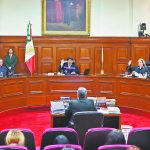The population of the “Seahorses” or hippocampi, a species that was in danger of extinction in the Bay of San Antonio, in the province of Río Negro, grew 400% due to the lack of tourism in the area as a result of the coronavirus pandemic, said this Friday the Conicet researcher Diego Luzzatto, who has been following the evolution of this species for a decade.
“Since the studies had never stopped the downward trend,” Luzzatto posted on Facebook to warn the authorities about the importance of controlling tourist activity to prevent the disappearance of Hippocampus patagonicus from the area.
According to the researcher’s studies, these small fish with a laterally compressed body that swim in an upright position and whose head resembles that of a horse, were on the brink of extinction as their population had been reduced by 90% before the pandemic due to the increase in tourism especially in the last three years.
“Last summer there was no intervention in the sea and on the coast that there are every year, there were fewer people, vehicles and beach nets,” Luzzatto said to explain the increase in this species.
However, he criticized that tourist activity “was very unregulated and no one controlled the activities that people carried out in the bay; this declined very markedly the population of seahorses.”
“I have been studying them for 10 years and this is the first time I have seen that the population increased,” he remarked.
Luzzatto conducted three tests on the site to verify the expansion of specimens, and together with that confirmed that they are young individuals.
“I am not finding animals from previous years, they are those that were born between spring and last summer,” he explained in dialogue with Télam, Although he warned that with the return of tourists this season the situation may change, which led him to warn about the issue through social networks.
In fact, the Government of Río Negro estimates that there will be a massive influx of tourists in the next summer season on the Atlantic Coast and in the mountain range.

Meanwhile, the Secretary of the Environment of Río Negro, Dina Migani, confirmed to Télam today that “the plant of environmental guards will be expanded for the 14 Protected Natural Areas of the province” for the season.
“Each area has its management plan detailing which are the species that must be conserved, and which places are more fragile,” said the official, who specified that there will be environmental guards dedicated to serving people and caring for fauna. provincial.
For this, “it is intended to hire only 70 environmental conservation agents for the season, from December 1 to early April; many will be graduates of the University of Río Negro,” he added.
Punta Perdices
Another place of study in the Bay is Punta Perdices, where many tourists have also arrived in recent years, so it will also have a fixed point of control “so that it is no longer a no man’s land,” Luzzatto said.
The Protected natural area of the province includes the Golfo San Matías, which includes the municipality of San Antonio Oeste and Las Grutas, “an area of multiple uses that has different zoning depends on the uses of each place,” said the researcher.
“There are intangible areas that are at risk if there is no tourism control; although Punta Perdices is not within an intangible area, it is nominated as a primitive area that only allows low-impact tourism, something that is not verified today” Luzzatto assured.
The researcher indicated that there “people use beach nets to fish cornalitos, which generates one of the worst impacts in the area because they are small fish that do not become adults and never reproduce. “
This human behavior alters the trophic chains of the species that come to reproduce in the bay.
“They are fishing them with those beach nets and nobody realizes that they also fish young seahorses,” he warned, concerned with what happens in the season, and considering that provincial decree 398/14 prohibits the use of nets inside of the San Antonio Bay Protected Natural Area.
“It is a question of the attributions that tourism takes towards the natural area, many times under a cloak of ignorance”Diego luzzatto
The researcher explained that it is a species “that does not kick and is mixed and trapped with the algae that are removed with the nets; there may be up to 10 tiny seahorses that die when they barely reach three centimeters in length.”

“The final destination almost certainly the juvenile seahorses is to be discarded on the beach next to the mass of algae,” he lamented.
Another problem that seahorses face is trampling their habitat when the tide is low.
“Everything depends on how the environment is used from here to the future, it is a question of the attributions that tourism takes towards the natural area, many times under a cloak of ignorance,” said Luzzatto, who explained that there is a lack of posters and a little oversight to control the actions of tourists.
“It is not a question of imposing fines, but of people understanding the situation“, concluded the specialist.


















